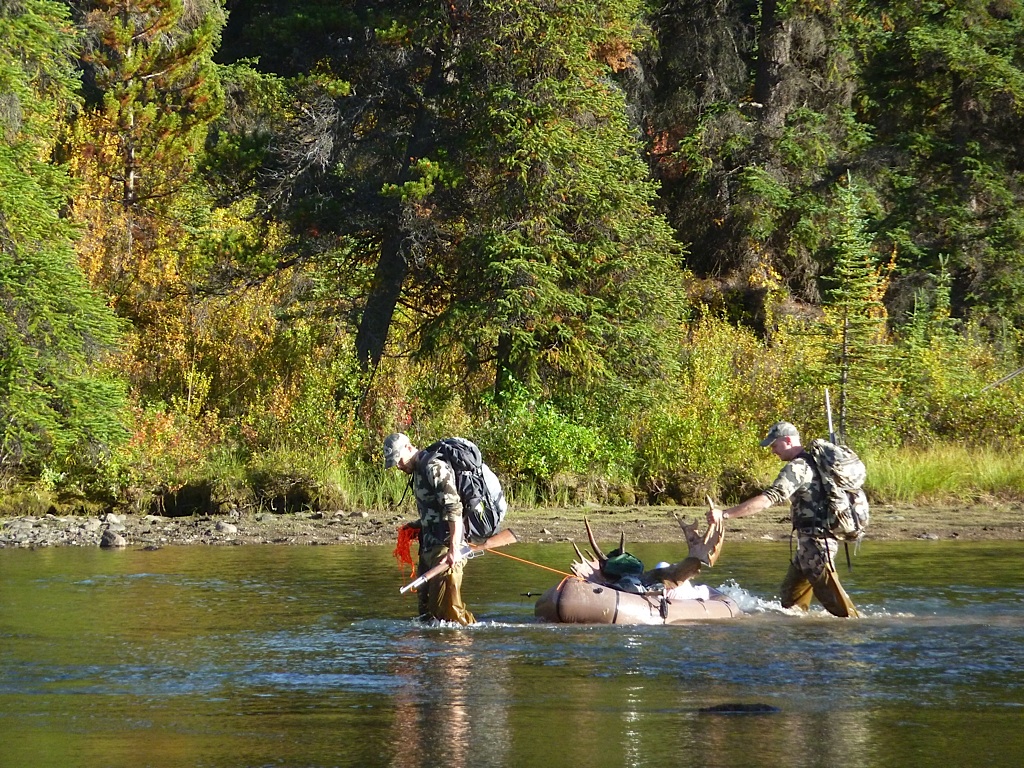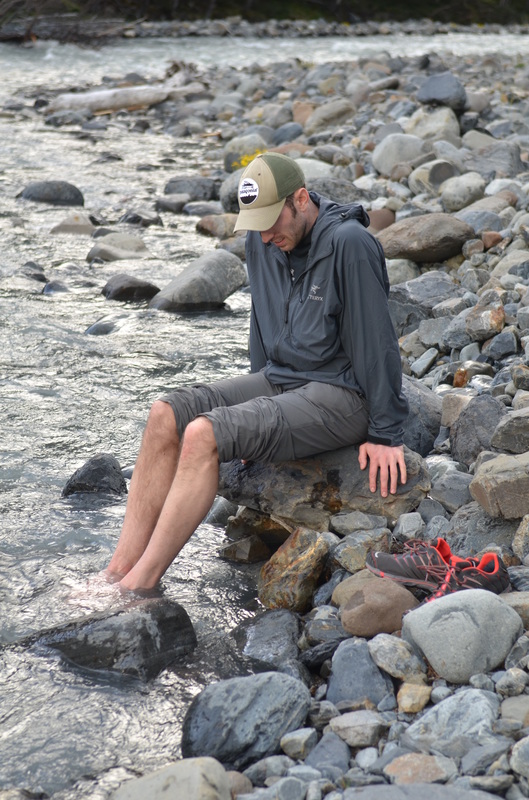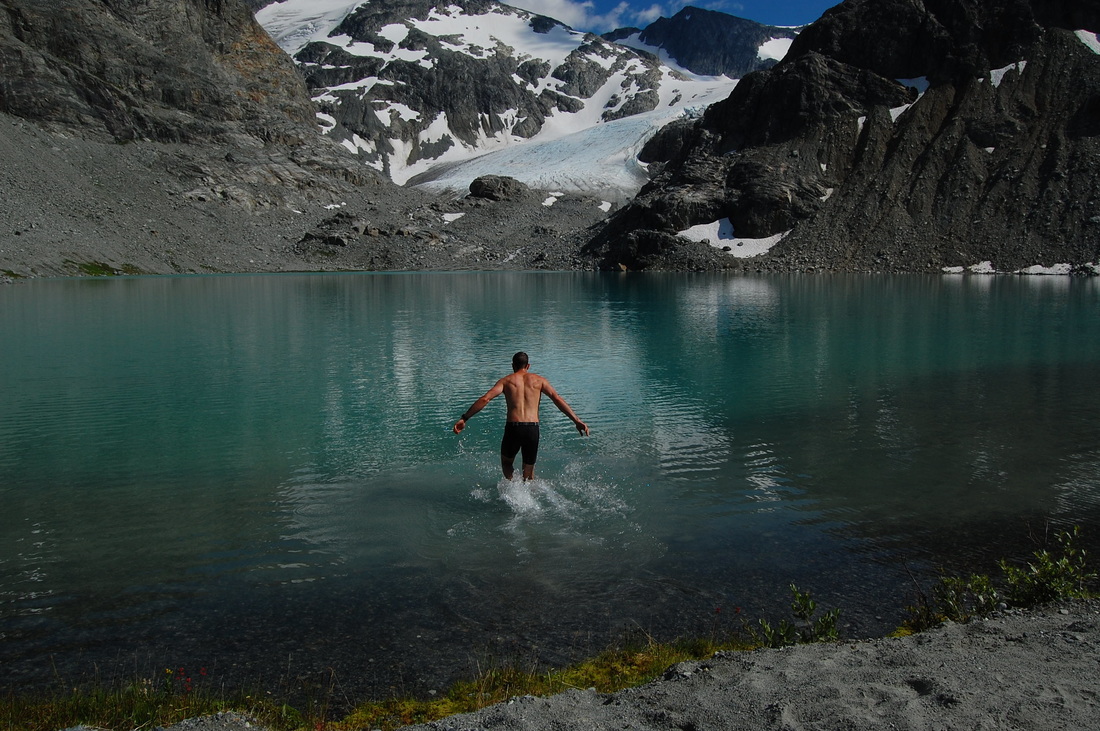Physical day to day recovery is one of the most important aspects of a successful multi-day backcountry hunt. With adequate preparation the first few days in the mountains can be handled with relative ease, and for some this simply means “gritting it out”, but as the days progress things can get complicated. For a lot of hunters, by the third or fourth day of continuous hiking and punishing elevation gains and losses, the demands on the body start to stack up and pose legitimate challenges. Endurance, strength and focus suffer.
That quad that was a bit tight over the first couple of days is now a seized up mess, that Achilles tendon that was feeling hot on day two is now a throbbing inferno of pain and that knot between your shoulder blades that set-in after you packed into spike camp now feels like you were stuck with a broadhead and worsens with every breath. The thought of putting your pack back on for another 4000 feet of elevation gain makes you cringe.
Training and conditioning is a huge driver of success however very few people spend 10 consecutive days putting their body through what will be demanded on a serious backcountry hunt. Even if you live in an area where you have access to the mountains on a regular basis and can do some serious training day in and day out, the fact that you have the amenities and comforts of home to come back to makes a huge difference. The quality of sleep and diet alone make a world of difference in your ability to get up and get it done the next day. So what can you do to optimize your recovery from day to day and increase your chances of success on your extended backcountry hunt?

There is a very simple “triad” to follow when you are striving to improve general performance: fuel, recovery and training. The training component is a multifaceted monster that can be approached from many different standpoints and here at The Journal of Mountain Hunting, we have dedicated an entire column to just that. Fuel is another very complicated and highly opinionated and contentious area at this time, whether we’re talking Paleo, slow-carb or the traditional Food Pyramid, so it’s very important to read as much as possible from as many sources as possible when considering a change in your diet or nutritional plan. Recovery however, is often overlooked and an under-emphasized aspect of your training and conditioning program. In this article, I will focus on what you can do both in the field and at home to recover and recuperate faster and therefore perform better as your hunt or backcountry trip lengthens. By far the most fundamental element recovery is sleep. If you don’t sleep well you don’t perform well end of story. REM sleep is when your body repairs itself so do everything possible to get at least seven hours per night and ideally eight.
There are five things that I swear by when it comes to recovery and general performance. The five key tools or techniques I use are: compression garments, hydrotherapy, branch chain amino acids (BCAAs), omega 3 oils and magnesium. In this article we will be discussing compression garments and hydrotherapy and will go into further detail about supplementation in a future article.
I’ve conducted a ton of personal research on this topic and have applied it to the basic principles of human physiology. When I say I’ve experimented with the options outlined below, this has been through trial and error over the past 8 years of training for mountain hunts and other backcountry pursuits as well as competing in ultramarathons that have ranged in distance from 50km (30 miles) to over 100 miles. My primary career is directly focused and dedicated to human performance and recovery. I am a practicing Registered Massage Therapist (RMT) here in BC with over 3000 hours of clinical education in physiology, anatomy, histology and biomechanics under my belt and have spent the past 6 years working directly with weekend warriors and high performance athletes. I am also one of the lead manual therapists for a professional sports team and I am more than confident that the information I provide here about compression garments and hydrotherapy is entirely accurate.
Compression garments have been used for more than 50 years in the medical community. They were first used on post-operative patients to improve venous blood return by applying a controlled gradient compressive force to the body’s extremities. A pressure gradient means the pressure at the end of the limb (leg or arm) is the highest and reduces as your travel up towards the torso, where the heart and lungs can do their job. The blood that is returning to your heart is under less pressure than the blood leaving your heart and in the extremities this can result in poor circulation that causes edema (swelling) for people who are bed ridden or immobilized. With normal, healthy and upright individuals the simple action of the muscles contracting and relaxing creates a pumping action that helps the blood return to the heart. Not so when you’re stuck in bed.
With endurance athletes and long duration activities however, the added stress of repetitive impact results in micro trauma to the surrounding tissues, and this can lead to swelling and poor circulation as the extracellular fluid builds up in the spaces between the cells in your body. Extracellular fluid is all the fluid that is not in your blood vessels or inside your cells and this is where compression garments help improve circulation and the removal of these fluids by applying a pressure gradient. With increased circulation there is also an increase in the removal of metabolic by-products like lactic acid that irritate the surrounding tissues and negatively impact endurance.
Compression also helps reduce muscle oscillations essentially holding the muscle in place so there is less stress and force placed on the tissues from repetitive impact. Studies have also shown compression garments can aid in the reduction of Delayed Onset Muscle Soreness (DOMS), specifically from the eccentric loading of the muscles. Think about how your quads feel after a big descent. This eccentric stress or load is the reason long, steep descents are the great equalizer of the backcountry. Going up may “burn”, but going down is the killer.
There are many compression garments on the market today and you can get everything from full body compression suits to something as simple as a calf sleeve. Unless you want to look like Catwoman on your next elk or sheep hunt, my suggestion would be to try a knee high compression sock or calf sleeve that has a pressure rating from 20mm Hg to 40mmh Hg. These can be worn both during activity or post activity. For long days in the mountains I would suggest wearing them all the time, although some people find them too restrictive during activity so test them out and if that is the case be sure to sleep with them on. Due to the relative lack of movement and muscle pumping that occurs during sleep, circulation will be compromised and you will experience the most benefits from the compression garments during this essential recovery time. Remember the first rule, sleep is the key!
The other tool or more specifically technique I’ve used extensively with incredible results is hydrotherapy. Hydrotherapy has been around for as long as humans have walked the earth and is defined as the use of water (in any of its forms – liquid, vapour or solid) to relieve discomfort and promote physical well-being. Hydrotherapy has a very strong effect on the circulatory system, primarily through the physiological responses of vasoconstriction and vasodilation. This simply means that with the application of cold hydrotherapy (water or ice) the circulatory vessels in your body (veins, arteries and lymph) constrict and become smaller reducing blood flow and then with the application of hot hydrotherapy (water, steam, hot water bottles, etc.) they dilate and become bigger increasing blood flow.
From a recovery standpoint hydrotherapy is best utilized through the application of cold or both hot and cold, what’s known as contrast hydrotherapy. After a long day on your feet the circulatory system is compromised resulting in the build-up of metabolic by-products like lactic acid and extracellular fluid that causes swelling. Through the use of cold hydrotherapy your blood and lymph vessels constrict shunting blood and extra cellular fluid back towards your heart and liver where it is re-oxygenated by the lungs and “detoxified” by the liver instead of staying stagnant and “pooling” in your extremities which irritates the tissues and results in pain and discomfort.
The contrast approach is always done with a hot application followed by a cold application. The hot application causes the vessels to dilate thus increasing blood flow to the tissues. When followed immediately with a cold application the constrictive forces quickly shunt blood and fluid back to the heart and liver. This is usually repeated 3 times and results in a series of “flushes” helping move blood and other fluids in and out of the tissues and bringing fresh oxygenated blood and nutrients like magnesium, BCAAs and omega 3s to tissues that are in need of repair. This technique also removes metabolic by-products away and back to the liver to be metabolized. Think of it like an “oil change” for your feet and lower legs.
For “in the field” applicability find a mountain lake, river or stream and get in it even if you can only submerge your feet, but if you can get waist deep the results will be even more significant. Be careful when getting out and moving about after soaking, as the tissues that are exposed to the cold will be tight and stiff. Move slowly and don’t stress the tissues until normal feeling returns.
From a time standpoint, with cold hydrotherapy follow the acronym CBAN. Once you feel these symptoms in this order Cold, Burning, Aching and Numbness you’re done and can get out of the water. The ideal contrast application is done with a hot and cold tub which you won’t have access to in the field so you can go in and out of the cold water 1 minute in and 1 minute out 3 times, finishing the last cold submersion for 3-5 minutes or to the feeling of numbness. If using strictly cold hydrotherapy, it is best utilized immediately after you’re done your training session or get back to camp. The contrast application is best applied a few hours after activity or during a recovery day or down day due to weather if in the field.
The utilization of either compression garments or hydrotherapy will have dramatic effects on your recovery. I have personally experimented with the use of each on their own, as well as combining both tools and techniques together and finally by not using them at all. What I have found to be most effective is to combine the two of them together by wearing a full compression sock or sleeve during activity or at least when you sleep and doing a cold submersion immediately after you are done your activity. This combo is safe, effective, inexpensive, and field applicable. So this hunting season don’t look at that cold river and stream and shudder, jump in and reap the recovery rewards! I promise you you’ll be thanking me by the end of your trip!
About the Author:
Matt is the Field Editor of the Journal of Mountain Hunting and plans, researches and coordinates a large portion of our Mountain Fitness and Mountain Life topics. His primary profession is as a Registered Massage Therapist (RMT), and he currently works as one of the lead therapists for Vancouver’s professional MLS team, Whitecaps FC.
Matt has completed 6 ultramarathons to date: three 50km races, two 50 mile races, and one 100km race. He is currently training for the Fat Dog 120 mile ultra in the North Cascade Mountains. Matt’s knowledge of what it requires to perform in the mountains is rooted in over 100 days a year in the field training for races, bagging peaks, fast packing, fishing and most importantly pursuing the game that call the mountains home.





